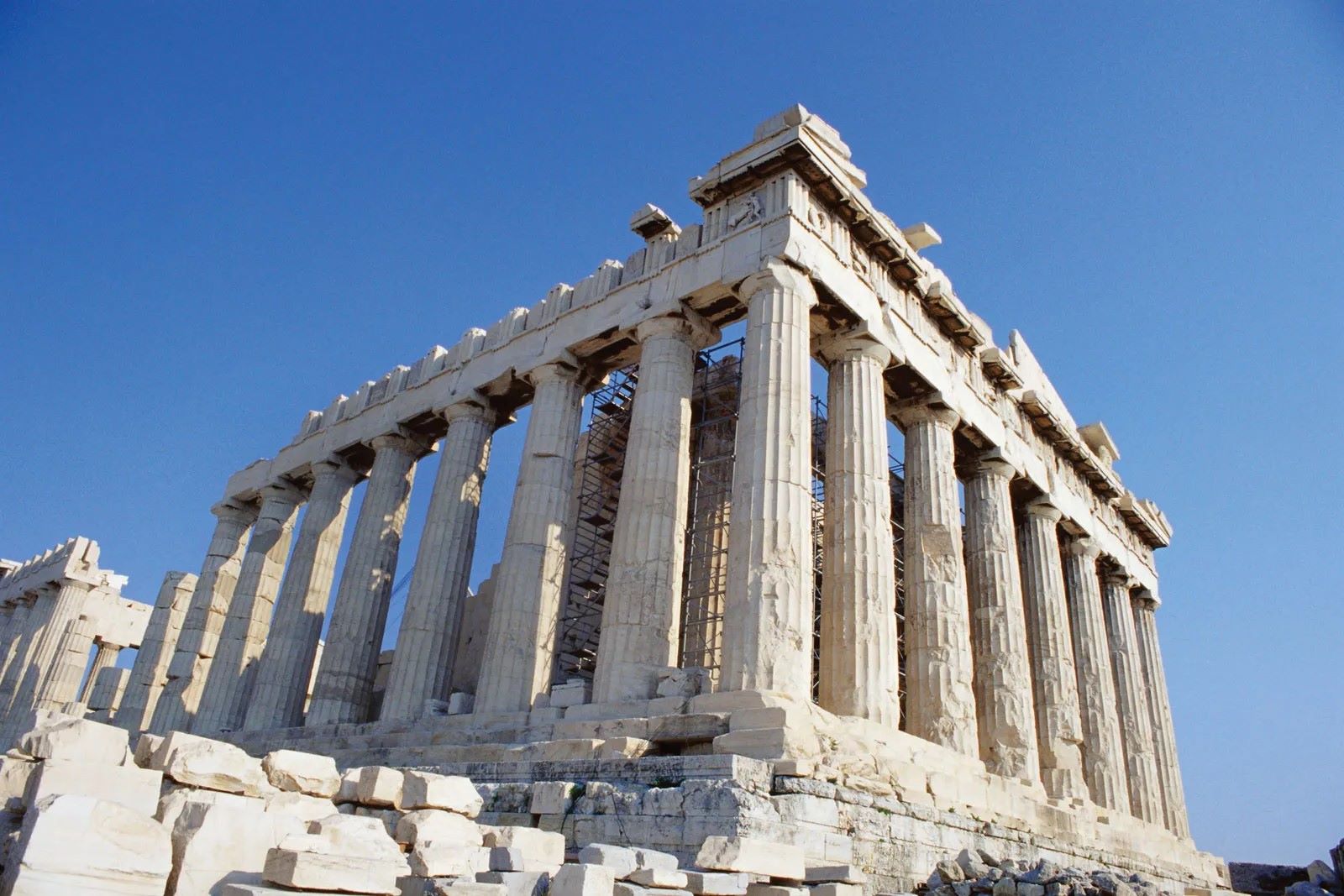
Why is the Parthenon so important? The Parthenon stands as a symbol of ancient Greece, democracy, and Western civilization. Built between 447 and 432 BC, this architectural marvel was dedicated to Athena, the goddess of wisdom and war. Its intricate sculptures and Doric columns showcase the height of Greek artistry. The Parthenon also represents the political and cultural achievements of Athens during its Golden Age. Despite suffering damage over centuries, it remains a testament to human ingenuity and resilience. Visitors from around the globe flock to Athens to witness this iconic structure, making it a cornerstone of historical tourism.
The Parthenon: A Glimpse into Ancient Greece
The Parthenon stands as a symbol of ancient Greek civilization. This architectural marvel has fascinated historians, architects, and tourists alike. Let's dive into some intriguing facts about this iconic structure.
-
The Parthenon was built between 447 and 432 BC. It took just 15 years to complete this massive temple dedicated to Athena, the goddess of wisdom and war.
-
It was constructed under the leadership of Pericles. Pericles, a prominent statesman, oversaw the building of the Parthenon during Athens' Golden Age.
-
The Parthenon was designed by architects Iktinos and Kallikrates. These two masterminds collaborated to create one of the most enduring symbols of ancient Greece.
-
Phidias, a renowned sculptor, supervised the artistic elements. Phidias was responsible for the intricate sculptures and the massive statue of Athena inside the temple.
Architectural Marvels of the Parthenon
The Parthenon's design and construction techniques were ahead of their time. Its architectural features continue to inspire awe and admiration.
-
The Parthenon is a Doric temple. It follows the Doric order, one of the three classical orders of ancient Greek architecture.
-
It features 46 outer columns and 19 inner columns. These columns support the structure and add to its grandeur.
-
The columns have a slight bulge called entasis. This design trick corrects optical illusions, making the columns appear straight from a distance.
-
The Parthenon’s dimensions follow the golden ratio. This mathematical ratio, believed to be aesthetically pleasing, is evident in the temple's proportions.
The Parthenon's Sculptural Beauty
The Parthenon is not just an architectural wonder; it is also a treasure trove of ancient Greek art. Its sculptures tell stories of gods, heroes, and mythical creatures.
-
The Parthenon housed a colossal statue of Athena. This statue, made of gold and ivory, stood about 12 meters tall.
-
The temple's frieze depicts the Panathenaic procession. This annual festival celebrated Athena's birthday with a grand parade.
-
The metopes illustrate various mythological battles. These include the battle between the Lapiths and Centaurs, and the Gigantomachy.
-
The pediments showcase scenes from Athena's life. The east pediment depicts her birth, while the west pediment shows her contest with Poseidon.
Historical Significance and Changes
Over the centuries, the Parthenon has undergone numerous transformations. Each era left its mark on this ancient structure.
-
The Parthenon was converted into a Christian church in the 6th century AD. It was dedicated to the Virgin Mary during this period.
-
It became a mosque in the 15th century. After the Ottoman conquest of Athens, the Parthenon was repurposed as a mosque.
-
The Parthenon suffered significant damage in 1687. An explosion caused by a Venetian bombardment destroyed much of the structure.
-
Lord Elgin removed many sculptures in the early 19th century. These artifacts, known as the Elgin Marbles, are now housed in the British Museum.
Restoration and Preservation Efforts
Efforts to restore and preserve the Parthenon have been ongoing for decades. These initiatives aim to protect this cultural heritage for future generations.
-
Restoration began in the 1970s. The Greek government launched a comprehensive project to stabilize and restore the Parthenon.
-
Modern technology aids in the restoration process. Techniques like 3D scanning and computer modeling help in accurately reconstructing damaged parts.
-
The Acropolis Museum houses many original sculptures. This museum, located near the Parthenon, displays artifacts found on the Acropolis.
-
The Parthenon is a UNESCO World Heritage Site. It was designated as such in 1987, recognizing its cultural and historical significance.
The Parthenon's Influence on Modern Architecture
The Parthenon's design has inspired countless buildings around the world. Its influence can be seen in various architectural styles and structures.
-
The United States Capitol building draws inspiration from the Parthenon. Its neoclassical design echoes the grandeur of ancient Greek architecture.
-
The British Museum's facade resembles the Parthenon. This iconic museum in London features a portico with columns similar to those of the Parthenon.
-
The Parthenon in Nashville, Tennessee, is a full-scale replica. Built in 1897, this replica serves as a testament to the enduring legacy of the original.
-
Many banks and government buildings use Doric columns. This architectural element, popularized by the Parthenon, symbolizes strength and stability.
Fun Facts About the Parthenon
Beyond its historical and architectural significance, the Parthenon has some fun and lesser-known facts that add to its allure.
-
The Parthenon was painted in bright colors. Contrary to its current white appearance, the temple was originally adorned with vibrant hues.
-
It has no straight lines. Every part of the Parthenon is slightly curved to create an optical illusion of perfection.
-
The Parthenon was built on the remains of an older temple. This earlier structure, known as the Pre-Parthenon, was destroyed by the Persians.
-
The Parthenon has inspired numerous works of art. Painters, writers, and filmmakers have drawn inspiration from this ancient masterpiece.
The Parthenon Today
Today, the Parthenon continues to be a major tourist attraction and a symbol of Greek heritage. Its enduring legacy captivates visitors from around the globe.
-
Millions of tourists visit the Parthenon each year. It remains one of the most popular historical sites in Greece.
-
The Parthenon is illuminated at night. This stunning display highlights the temple's architectural beauty against the night sky.
-
Cultural events are held at the Parthenon. Concerts, performances, and exhibitions take place in its vicinity, celebrating Greek culture.
-
The Parthenon is a symbol of democracy and Western civilization. Its enduring presence reminds us of the values and achievements of ancient Greece.
The Parthenon's Lasting Impact
The Parthenon stands as a testament to ancient Greek architecture and culture. Its history and design continue to inspire scholars, tourists, and architects alike. From its construction in the 5th century BC to its role in modern times, the Parthenon has witnessed countless events and transformations. Its columns, sculptures, and friezes tell stories of gods, heroes, and everyday life in ancient Athens. Despite wars, earthquakes, and pollution, the Parthenon remains a symbol of resilience and beauty. Visiting this iconic structure offers a glimpse into the past and a deeper appreciation for the achievements of ancient civilizations. Whether you're a history buff or just curious, the Parthenon is a must-see. Its legacy will undoubtedly continue to captivate future generations.
Was this page helpful?
Our commitment to delivering trustworthy and engaging content is at the heart of what we do. Each fact on our site is contributed by real users like you, bringing a wealth of diverse insights and information. To ensure the highest standards of accuracy and reliability, our dedicated editors meticulously review each submission. This process guarantees that the facts we share are not only fascinating but also credible. Trust in our commitment to quality and authenticity as you explore and learn with us.


